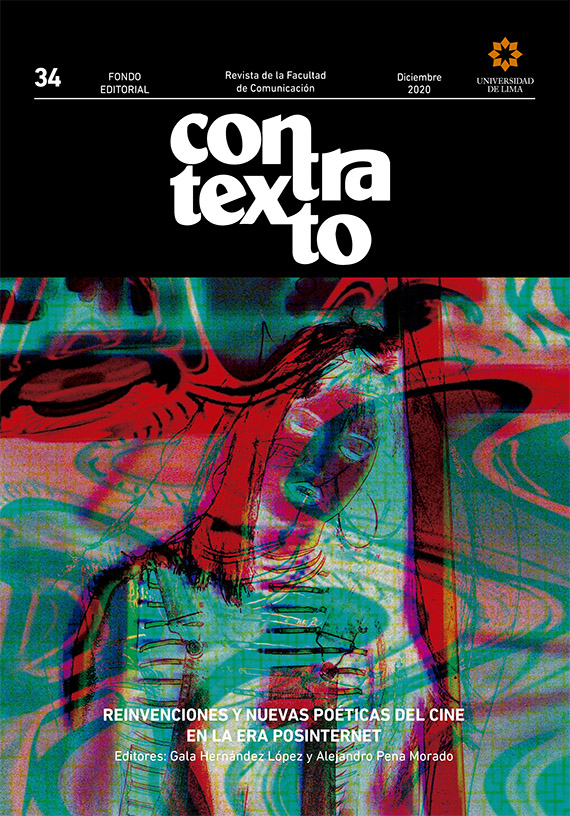Óscar Pérez (1981-2018): chronicle of a death foretold
DOI:
https://doi.org/10.26439/contratexto2020.n034.4866Keywords:
Óscar Pérez, monster-archive, counter-narration, user generated content, captopticonAbstract
In this article, we propose the comparative study of two works that use videos of Venezuelan political opponent Óscar Pérez who was killed during a military raid. Romain Champalaune’s film (The Life and Death of Óscar Pérez) and the website of the British collective Forensic Architecture question us about the future of user-generated content and the place of the artist and the researcher in the society of hyper-production of texts and documents. After introducing the Perez case and presenting the works, we analyze the regime of proof and the idea of truth and the archive in the era of algorithmic governmentalities. Finally, we study how investigation and the collection of user-generated content allow for a shift in our power regimes through the implementation of counter-narration to that of the powers that be.
Downloads
References
Alloa, E. (December 30, 2014). La transparence dans le viseur américain. Libération. https://www.liberation.fr/planete/2014/12/30/la-transparence-dans-le-viseur-americain_1171958
Alloa, E. (March 2, 2018). La nouvelle guerre du storytelling: qui surveille qui? Le Magazine littéraire. https://www.nouveau-magazine-litteraire.com/idees/nouvelle-guerre-storytelling-qui-surveille-qui .
Amnesty International. (January 17, 2018). Venezuela: State must respond for deadly security operation. https://www.amnesty.org/en/latest/news/2018/01/venezuela-state-must-respond-for-deadly-security-operation/
Barthes, R. (1980). La chambre claire: note sur la photographie. Gallimard.
Bolter, J.D. & Grusin, R. A. (1999). Remediation: understanding new media. MIT Press.
Couston, J. (April 2019). À voir sur Télérama: “Vie et mort d’Oscar Pérez”, de Romain Champalaune, Prix du jury au festival de Brive. Télérama.
Deneuville, A. (2020). S’approprier Twitter en artiste: une pratique littéraire en question. Communication and languages, 203.
Fiorella, G. & Leroy, A. (May 2018) “We are going to surrender! Stop shooting!”: Reconstructing Óscar Pérez’s Last Hours . Bellingcat. https://www.bellingcat.com/news/americas/2018/05/13/we-are-going-to-surrender-stop-shooting-reconstructing-oscar-perezs-last-hours/.
Forensic Architecture. (2018). The killing of Óscar Pérez. https://forensic-architecture.org/investigation/the-killing-of-oscar-perez
Fraser, M. (2019). L'archive monstre: de l'ars memoria au big data in Dallet, J-M and Gervais, B. Architectures de mémoire. Presses du réel.
Ganascia, J-G. (October 2010). The Great Catopticon. http://www-poleia.lip6.fr/~ganascia/Catopticon.
Granado, O. (January 18, 2018). CEV pide al Gobierno iniciar una investigación "objetiva" de la "masacre de El Junquito". TalCual. https://talcualdigital.com/cev-pide-al-gobierno-iniciar-una-investigacion-objetiva-de-la-masacre-de-el-junquito/.
Gunthert, A. (2015). L’image partagée. La photographie numérique. Textuel.
Human Rights Watch. (January 17, 2018). Venezuela: HRF condena ejecución extrajudicial de Oscar Pérez. https://mavenroundtable.io/humanrightsfoundation/americas/venezuela-hrf-condena-ejecución-extrajudicial-de-oscar-pérez-3MCMVvzfoE-TQ7kTA4U9vQ.
Hanna, C. (2010). Nos dispositifs poétiques. Questions théoriques.
Leibovici, F. (2007). Des documents poétiques. Al Dante.
Leibovici, F. (2020). Des opérations d’écriture qui ne disent pas leur nom. Questions théoriques.
Nora, P. (1972). L'événement monstre. Communications, 162-172.
Schenk, D. (2014). Pouvoir de l’archive et vérité historique. Écrire l’histoire. http://journals.openedition.org/elh/463
Vial, S. (2013). L’être et l’écran: comment le numérique change la perception. Presses Universitaires France.
Weizman, E. (2017). L’image en conflit. La violence au seuil de sa détectabilité in Alloa, E. Penser l’image. 3: Comment lire les images? Presses du réel.
Downloads
Published
Issue
Section
License
All of the works published are licensed under a CC BY 4.0 Creative Commons Attribution license. (updated on March 1st 2021)
The content of the journal may be shared in any material or format. The content may be adapted, contributed upon and transformed. Both possibilities are only permitted in so far as they complete the following conditions:
- Attribution: Credit must be given where it is due, a link to the license must be provided and changes, if made, must be indicated. This should be done in the manner deemed appropriate, without suggesting that the licensor promotes you or your use of the material.
Ownership rights
The patrimonial rights for Contratexto are published under a Creative Commons BY 4.0 license, allowing authors to keep the patrimonial rights to their work without restrictions.
If a work published in Contratexto were to be copied, distributed, spread, or any other activities contemplated in the aforementioned license, the author(s) and the journal must be mentioned visibly and expressly.
Self-archive
This journal allows and encourages authors to post items submitted to the journal on personal websites or institutional repositories both prior to and after publication, while providing bibliographic details that credit, if applicable, its publication in this journal.


